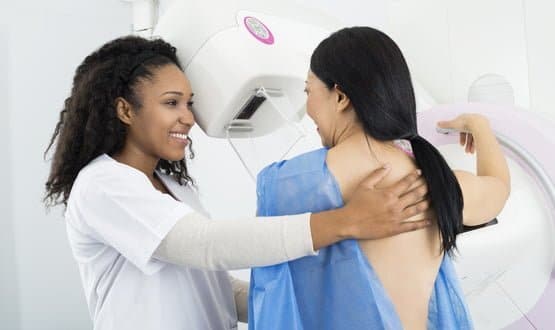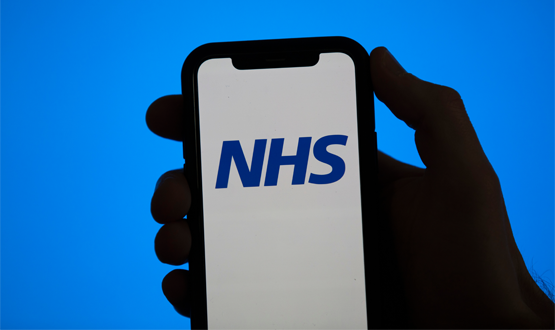Screening IT systems ‘unsafe’ and require ‘urgent’ upgrades, review finds
- 16 October 2019

Cancer screening IT systems “cannot support the safe running of programmes” and need to be upgraded “urgently”, a damning new report has found.
Information systems used to support breast, cervical, bowel and other screening programmes in the country sit in an “over-complicated landscape” which hinders their delivery, Professor Sir Mike Richards found in his review of the national screening programmes.
He called on NHSX to set a roadmap for the delivery of new targeted and population screening IT systems “as soon as possible”.
He also recommended new IT systems should include a focus on functionality needed to improve uptake and coverage of screening.
In his review, Sir Mike, the first NHS cancer director and former CQC chief inspector of hospitals, found current IT systems “cannot support the safe running of screening programmes nor protect against missed opportunities to diagnose cancer and other disease”.
Three problems with the current system were identified: Identification, managing screening and recording outcomes.
“Although the IT systems for bowel and abdominal aortic aneurysm screening are more modern than those for the other adult screening programmes, none have the full functionality required now or for the future,” it said.
“Replacement of systems to support breast and cervical screening is particularly urgent.”
Currently, bowel and abdominal aortic aneurysm screening have a single IT management system, which can be updated centrally, allowing the screening record to follow the patient.
Breast, cervical and diabetic eye screening IT systems, however, exist in “multiple versions” that are often given “low priority” within NHS trusts, Sir Mike found.
Multiple systems often means “transferring information to follow a patient who moves address is often delayed or may not be done at all”.
“These individual systems are also old and liable to fail. In practice, this means that a system can be out of action for one or two days necessitating manual workarounds which are liable to human error and can pose risks to safety,” the report said.
In some cases, breast screening management systems have not been updated since the 2017 WannaCry cyber-attack, despite the IT provider developing a solution, it said.
The lack of interoperability between hospitals was also highlighted, with emphasis on the importance of information on patients with abnormal findings being easily accessible from all healthcare perspectives.
Sir Mike, who was commissioned to undertake the review after the breast screening scandal in 2018, said: “Screening programmes are a vital way for the NHS to save more lives through prevention and earlier diagnosis and currently they save around 10,000 lives every year.
“Yet we know that they are far from realising their full potential – people live increasingly busy lives and we need to make it as easy and convenient as possible for people to attend these important appointments.”
Simon Stevens, NHS chief executive, added: “His [Sir Mike’s] sensible recommendations keep all that is good about NHS screening services, while rightly setting out a blueprint for more convenient access, upgraded technology, and progressively more tailored approaches to early diagnosis.”
[themify_box icon=”info” color=”gray”]
Sir Mike’s recommendations for IT and equipment
- NHSX should set out a roadmap for the delivery of new targeted and population screening IT systems as soon as possible, with a primary focus on the challenges with cervical and breast screening programmes and with regular reports on progress provided to DHSC and NHSE
- This review recommends that the development of screening IT systems should include a necessary focus on the functionality needed to support improvements in uptake and coverage of screening and take into account the specific needs of population and targeted screening approaches
- A dedicated capital fund or similar approach to support the purchasing of screening equipment and facilities should be established to replace old equipment and meet future activity increases, given the competing priorities for capital allocation in the system
[/themify_box]
A functioning IT system
“Much needed” functionality is missing in the current approach to IT systems, Sir Mike concluded.
Modernised IT systems should allow patients to make or change their own appointments, access information on their screening records and see when their screening appointments are due, none of which is currently available, the report found.
It should also include a “necessary focus” on what’s needed to improve uptake and coverage, including how people are invited to screening, how they are managed through the system and how results and reviewed and analysed.
Failing equipment
Sir Mike also called for a dedicated capital fund to support the replacement of old equipment to meet future need.
The review found equipment and facilities “have not kept pace with demand” and several trusts deemed the replacement of screening equipment unaffordable due to wider demands on capital budget.
He welcomed the Prime Minister’s recent pledge of £200 million to replace MRI machines, CT scanners and breast screening equipment as a “first step” to addressing this issue.
Public Health England, NHS England, NHSX and NHS Digital have begun work to “scope out” the recommended changes to for breast and cervical screening programmes, the report said.
Sir Mike welcomed the formation of NHSX and its adoption of screening IT systems as one of its flagship programmes.
He noted a “major opportunity” to provide the strategic leadership to significantly improve and transform IT for screening programmes, which will contribute to the required improvement in uptake and coverage.
Not all bad news
The report found new technologies like artificial intelligence (AI) have the potential to ease a growing pressure on the NHS workforce and are likely to bring benefit to healthcare in the coming years.
AI algorithms already at an advanced stage for interpreting mammograms and retinal images.
Currently each mammogram is independently evaluated by two radiographers, but AI has the potential to ease current workforce strains by taking on the job of one radiographer, Sir Mike found.
“It is important to stress that this will not replace the need for radiographers and radiologists who undertake many other roles that are essential for the effective delivery of the programme,” the report said.
The recently announced £250m for a national AI Lab to improve diagnostics should prove “instrumental” in taking AI research forward, the review added.
The programme aims to improve cancer screening and speed up results, use DNA data to identify patients most at-risk of diseases, up-skill the workforce to use artificial intelligence (AI) systems and automate routine administration tasks to free up clinicians.
READ MORE
- IT needs ‘radical upgrade’ to improve cancer screening, interim report finds
- Outdated NHS cancer screening IT systems ‘woefully inadequate’
- Charities call for quicker access to technology in NHS screening review
- Boris Johnson pledges £200m for new cancer screening technology




